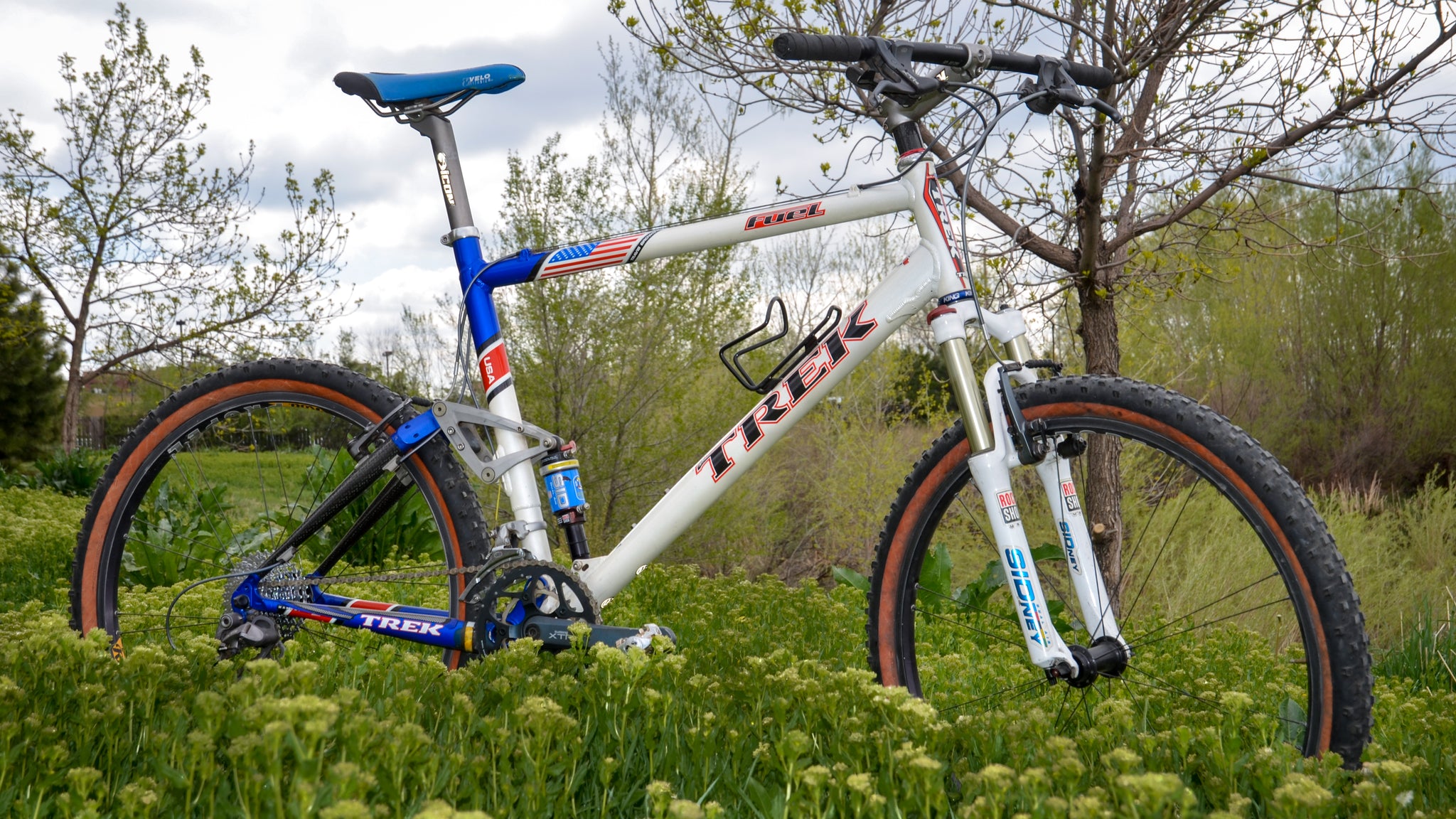If anyone was going to be the first, it was going to be Travis Brown. On a hot September day near Sydney, Travis Brown rolled up to the 2000 Olympic mountain bike race. His bike was fitting for the first Games of a new millennium: a full-suspension Trek Fuel. Though his 32nd-place result was way off the lead, he became the first to ride a full-suspension bike in the Games.
“This was a period when a lot of racers turned their noses up at full suspensions,” he said. 
Travis Brown broke trail at the Sydney Olympics in 2000, riding a full-suspension bike for the first time in the cross-country event. Photo: Doug Pensinger | Allsport
And for good reason — It was a different time for race courses and bike design. Olympic tracks were smooth and fast. Engineers were still trying to find ways to make full-suspension bikes light, durable, and efficient.
That didn’t stop Brown, though.
The American had a history of dabbling with innovative technology, going back to his first sponsorship with Manitou. He rode a full-suspension bike in 1991, 10 years before he debuted the Fuel in Sydney. 
“Bikes have evolved to be faster, but it’s not always about weight, which is a super easy metric to measure that we all get attached to,” he said. “We just want a faster bike, and if a faster bike’s a little heavier, that’s fine.”
So to create this faster bike for the Sydney Olympics, Brown worked with his sponsor, Trek. Prototypes were built in a special shop in Madison, Wisconsin.
“It was the beginning of a real tradition of success for this bike at the World Cup level. It was pretty darn refined for the period.”
How much did Brown trust that his engineers and fabricators would get it right for his Olympics debut? Well, his first ride aboard this red, white, and blue bike was the 49.5km Olympic XC race.
“I had ridden rough prototypes of this bike leading up to the race, so we went through any details that would have caused a problem,” he said. “I was comfortable on this bike right when I got on it. I was committed to racing this bike; I was really happy to be racing it.”
To save weight, the rear suspension was built around carbon seat stays with engineered flex. 
“We [Trek] have a pretty thorough history of flexing stays versus putting a pivot in,” he said. “It’s gotten to the tipping point where there’s a lot of companies now using flexing stays.”
The geometry was also ahead of its time with a roomy front-center to give the lanky Brown the long reach he desired.
“Geometry hadn’t evolved that far from what was road bike geometry,” he said about other bikes of the era. “Front-centers were pretty short. We kind of stuck with that 71 seat angle/73 head angle geo for such a long time before it started to evolve. First was front-center length. This bike had a little of that. It took a while for XC bikes to embrace slack head tube angles.” That said, his Fuel sported a 70-degree head angle.
Apart from the frame, Brown was always tinkering with components to get any competitive edge he could find.
"I was committed to racing this bike; I was really happy to be racing it.”
His Shimano XTR drivetrain had a double-chainring crankset. Sure, that looks old-fashioned next to the SRAM Eagle 1x kit that Kate Courtney will ride in Tokyo, but back in the days of triple-ring cranks, it was unheard of.
“When you modify a triple to a double, it was challenging to get the gearing that you wanted and also have it shift between the two rings,” he said. “I was using a non-ramped stainless ring. One was getting the right size, and the other thing was that narrow steel ring was a little more robust in muddy conditions. People who have only ridden 1x don't realize how chainsuck was an issue then.”
Unfortunately, the dry, non-technical Sydney course didn’t suit Brown’s skillset, his full-suspension bike, or any of the clever modifications he’d made on it.
“I had a pretty disappointing day,” he said. “I’m not sure exactly why. I just didn’t have good legs and finished kind of in the middle of the field.”
But the race was an important milestone for full-suspension’s adoption in cross-country racing, and it was a proving ground for Trek’s novel bike.
“I don’t think there were things that really stood out that we changed,” he said, noting that the final production Fuel was very similar to the prototype he raced in Sydney. “The level of manufacturing changed. Maybe the rocker arm on this bike was a machined one-off piece and it was cast for production.”
It’s no surprise that nowadays Brown works for Trek to develop new mountain bike products. While many pro mountain bikers of his era were steeped in the conservative tradition of European road racing, his innovative approach to gear helped push bike technology forward. Even if it meant starting the biggest race of his career on a new prototype bike that weighed 24.75 pounds (with pedals, we checked!), he was up for it.
“It was the beginning of a real tradition of success for this bike at the World Cup level,” he said. “It was pretty darn refined for the period.”













